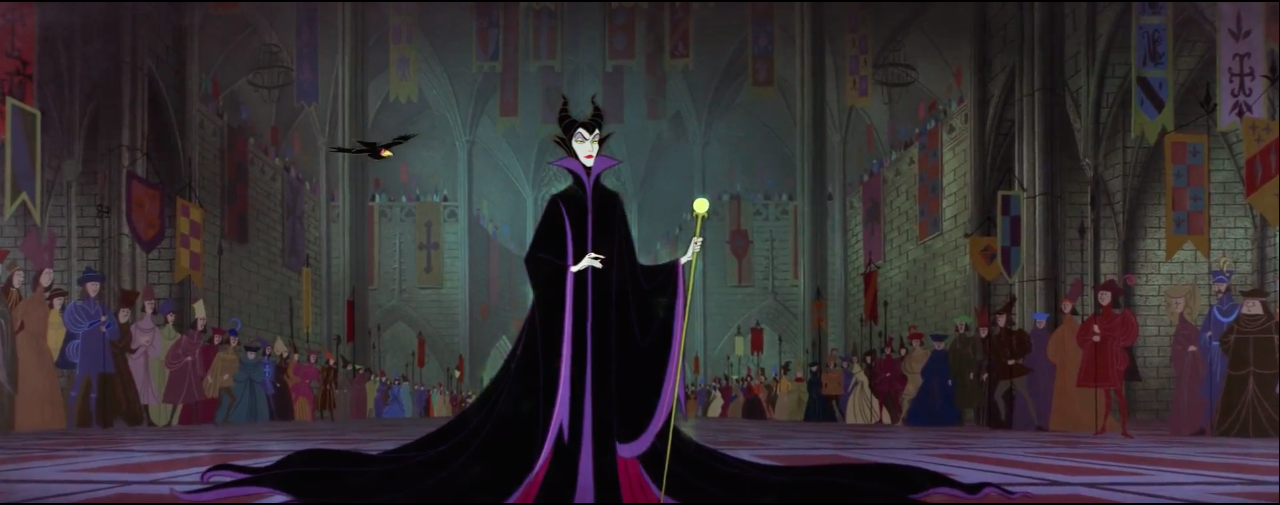
Film Matters: Please tell us about your article that is being published in Film Matters.
Suzi Fera: “Purple Reign” Is a stylistic analysis of the use of the color purple in Disney animated feature films. It argues that, until very recently, the color purple is generally reserved for villains and people who do not fit the American and Victorian ideals that Walt Disney promoted.
FM: What research and/or methodologies do you incorporate in your article?
SF: First, I watched a lot of Disney animation to make sure that my claims that the color purple was reserved for villains were substantial. Then, to back up my claims that the reason for this was because the animators were trying to trigger an instinctual mistrust of monarchy, I researched the origins of purple as a symbol of monarchy and writings of the founding fathers preaching about the tyranny of monarchs. I looked into different classic American storytelling techniques and themes, as well as Victorian-era social values, and looked to relate them to Disney storytelling. I also analyzed how the use of purple changed overtime.
FM: Describe the original context for/when writing this article while an undergraduate student.
SF: While taking the class Film Styles and Genres: Disney at the University of North Carolina Wilmington (UNCW), I noticed a trend that the only time the color purple was used in Disney animation was to dress the villains. That observation sparked my curiosity to look into the trend further and come up with the notion that this might have been on purpose.
FM: How has your department and/or institution supported your work in film and media?
SF: First, my professor, Dr. Sue Richardson, wrote a note at the end of the paper when I received the grade suggesting that I should look into publishing this piece in a journal or magazine. This shocked me because despite getting consistent A’s and B’s on my essays throughout college, I was never confident in my writing skills. Dr. Richardson has since been a vital supporter and mentor during this process. Also, while in school, the UNCW Film Department helped me get valuable internships that have boosted my education and professional network. They have also given me a solid base of knowledge for launching my career in film production that I would have been lost without.
FM: How has your faculty mentor fostered your advancement as a film scholar?
SF: Without Dr. Richardson’s support, I would have never even submitted this paper for publication consideration because I lacked the confidence in myself to even try.
FM: How has the Film Matters editorial and publication process impacted the development/evolution of your article?
DF: The Film Matters editorial publication process has impacted the development of my article by helping me tighten many of my arguments and strengthen the piece overall through the addition of images and more examples for analysis.
FM: What audience do you hope to reach with your Film Matters article and/or what impact do you hope it has on the field of film studies?
SF: I hope to be able to reach anyone who considers themselves a fan of Disney films, not just film scholars. I hope that this article will start a new conversation about the use of color as signals in Disney animation. I also hope that it will add something new to the discussions of theory and ideology surrounding Disney animation.
FM: What are your future plans?
SF: My future plans include continuing to work in film production in Atlanta, GA, eventually making a career as a director of scripted television. I also hope to finish the short documentary about paranormal research, a hobby of mine, that I am working on with some other UNCW alumni, and submit it to festivals. I also have some other short scripts that I hope to get into production sometime soon to help me find my directorial voice and exercise those creative muscles!
Author Biography
Suzi Fera is a graduate of the Film Studies Department at the University of North Carolina Wilmington, class of 2017. After graduating, she moved to Atlanta, GA, where she now works as a Production Assistant. Her credits include Investigation Discovery’s Your Worst Nightmare and Ghost Nation.




































